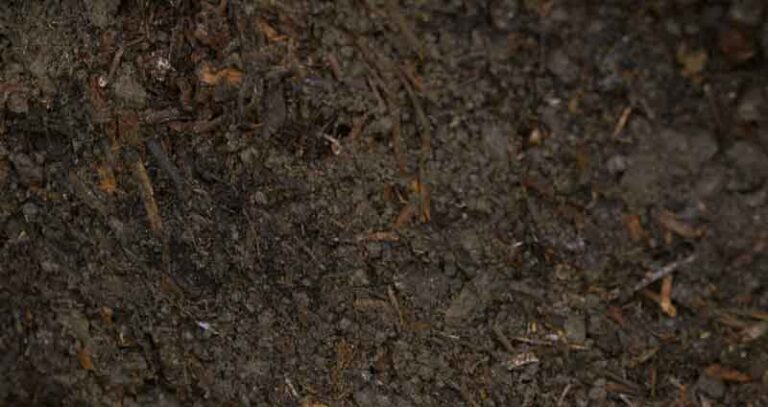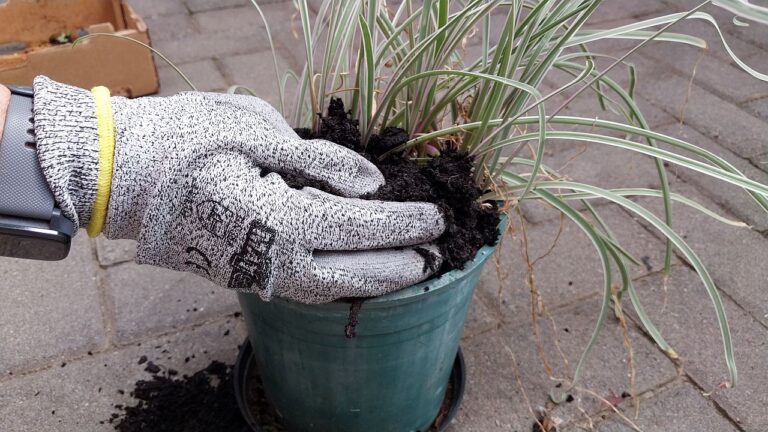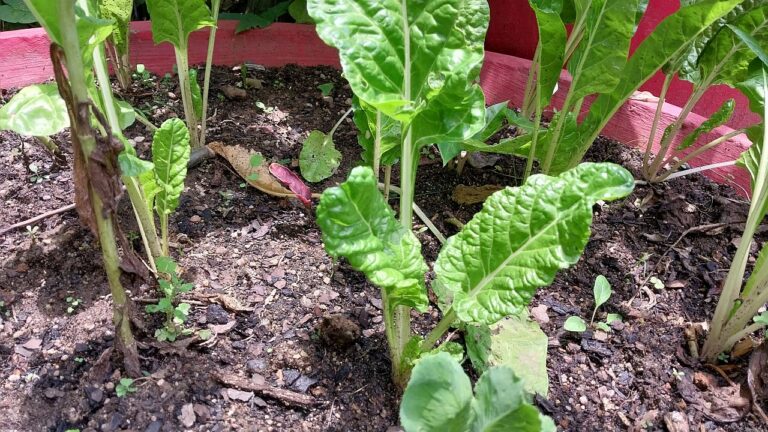10 Types of Compost You Need to Know

You might be wondering what type of compost is best suited to your gardening needs.
And there’s a surprisingly wide range of different types of compost you can use. Which can make things pretty confusing.
In fact, I would even say that no one type of compost is the same as another! After all, the resulting composting depends on so many different factors.
In this article, I’ll explain some of the most common types of compost you can find and their characteristics, so you can decide which one is right for you.
Different types of compost
Compost is a very generic term. But, broadly speaking, Compost is organic matter that has been decomposed and turned into a rich, dark soil amendment.
It is food for soil organisms and a source of nutrients. It stimulates and feeds soil life which enhances plant health.
So what are the different types of compost?
Compost types and uses
There are so many different types of compost it can be hard to know which one is the best for your garden.
Most compost types are named after the compost method used to make them, the ingredients included, or the intended end purpose.
This sometimes gives you a clue about how to use them in specific circumstances. I recommend you pay attention to the benefits and drawbacks of each type in the listing below.
Some are better than others for specific uses!
1. Bagged store-bought compost
Store-bought compost (the type delivered in bags) is commercially prepared compost. Don’t expect this to look or even perform the same way as the homemade variety.
A lot of commercial compost includes additional accelerators or fertilizers. So this type of compost will obviously give more of a boost to plants than your own backyard composting efforts.
Read the label to make sure what’s in the bag! It might not only be compost.
The compost looks very uniform because it has been screened to remove any fine particles.
The composting process is also carefully controlled by the company that made it. They make sure the conditionals are just right in terms of moisture and oxygenation so that the compost heats up. This is because they want thermophilic bacteria to take over the process, which breaks down the ingredients quickly. The high temperatures also guarantee that the compost is free of pathogens and weed seeds.
This gives commercial compost a fast turnover and a certain level of quality guarantee.
Most bagged compost comes from a limited source of ingredients, like farm manure. This means the nutrient content can be lower than home compost which includes a wider variety of organic materials. (That’s perhaps also why commercial compost is sometimes enhanced with additional fertilizer).
Multi-purpose and All-purpose Compost
You’ll often see bagged compost labeled “multi purpose” or “all purpose.” Unfortunately, this term can be somewhat misleading.
This commercially prepared compost is designed for a wide variety of growing needs, but that doesn’t necessarily mean it can be used for everything!
“All-purpose” doesn’t mean “all plants.”
For example, some of these growing mediums are not good for seeds or young seedlings.
Be sure to check out the label depending on your intended use.
2. Homemade compost

The advantage of homemade compost is you know what you put in!
Suppose you can gather a wide variety of materials. In that case, you’ll end up with compost that has a good nutrient profile from various sources.
Another difference will be the size of the particles and the uniformity of decomposition. Some parts will be well rotted, whereas others might not have broken down so much.
And the tougher woody pieces will still be visible. If you’re fussy about the texture of your compost, use a good compost sifter to pick out the larger bits.
The final thing to watch out for is the maturity of the compost. Immature compost can be problematic because it is still actively rotting and nutrient hungry. Using it in soil could deprive plants of nutrients.
Nevertheless, finished homemade compost is economical, ecological, and an excellent soil amendment.
3. Mushroom compost
This is another commercial product. It is, in fact, compost that has already been used by mushroom growers. Therefore, it is more accurately called “spent mushroom compost.”
Once the substrate has been used to grow mushrooms (a growing period of about 25 days), there is less food for new mushrooms to grow, but it remains valid for gardens.
Mushroom compost is made of straw or hay, plus manure and some gypsum.
It is light and soft and usually drains well thanks to the high straw content used in the original ingredients.
Thanks to the lime or gypsum content, this kind of compost can be slightly alkaline. This makes it suitable for counteracting soil acidity.
4. Green waste compost
Green waste compost is another commercial option. The source of its ingredients is municipal waste. It uses whatever is collected from local communities to produce compost on a large scale.
This product is very dark because it is heated to high temperatures. I’ve heard these systems can reach up to 175°F (80°C) temperatures. This helps to “cook” the weed seeds and unwanted bacteria.
Another thing to note about this type of compost is the high carbon level of the ingredients. Most garden waste from these systems includes a lot of “brown” carbon-rich waste like branches. But, Woody, carbon-rich ingredients like this need a lot of “green” nitrogen to help break them down. So nitrogen is less available with this type of compost.
A good tip is to order it well in advance and leave it for several months to rot a bit longer. You can also add some nitrogen matter to help things along.
Despite the high temperatures, you don’t always know what is in the compost ingredients for Green waste compost! For example, many gardeners use herbicides. Although most of these break down relatively quickly, some don’t and can remain active for long periods.
Compost with chemical or pesticide residues is not good for your plants!
If you have concerns, contact your municipality.
5. Worm castings (Vermicompost)
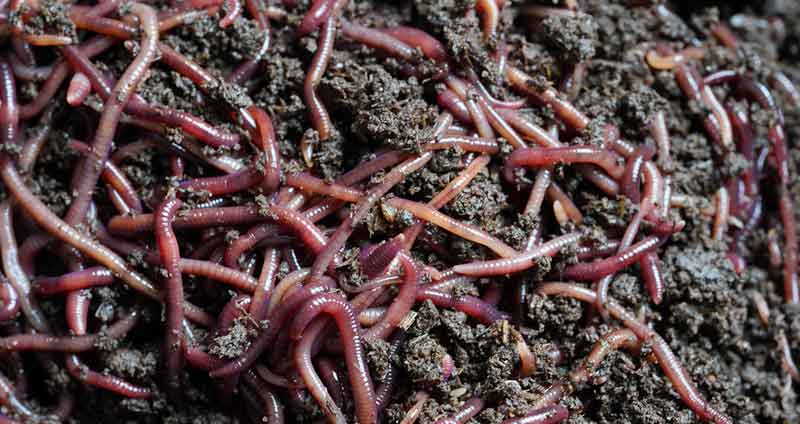
Worm castings are a waste product when worms eat organic ingredients like kitchen scraps. Otherwise known as “vermicasts” or “vermicompost,” this is essentially worm “poop.”
Worm castings are a useful bio-fertilizer. This substance is biologically active and nutrient-rich.
This kind of compost is excellent for growing seedlings and germination. The nutrient content is naturally “slow-release” because of the worm’s mucus excretions which bind up the nutrients.
You can produce your own castings by starting a worm farm. This option is popular with folks who want to recycle kitchen waste. You can also buy bagged worm compost. (Amazon)
6. Bokashi
This is a popular indoor compost type that’s worth mentioning. It’s another easy way to recycle food waste.
The end product differs from other types of compost because it’s actually “fermented” and not “composted .” In addition, the process is anaerobic (happens without oxygen) rather than the other types of compost in this list which use “aerobic” methods (with oxygen).
To make bokashi, you seal the kitchen scraps in a container and add a special “bokashi bran .” This is a kind of compost accelerator containing an “effective microorganism” that helps ferment the food waste. The end result is ready in about a month and can be added to compost or buried in your garden beds.
In this respect, I think of Bokashi as a kind of “pre-compost .” Of course, it needs to be further broken down to be effective. Still, it speeds up the initial process of decomposition.
You can buy bokashi kits like this with everything you need to get started. (Amazon link)
7. Manure compost

Manure compost is generally made from horse, cow, or chicken manure. Manure is a farmer’s waste product. Composting companies use this readily available source to make compost on a large scale. But if you have local farmers, you can make your own.
The manure is left to decompose to turn it into a more effective soil amendment. It can be made from manure only, but often it includes straw or wood shavings. Cows and horses are often bedded on straw, adding a beneficial carbon ingredient.
Manure compost can be an excellent way to make “hot compost .”The high nitrogen content in manure helps to boost the process. Also, it’s a good way to eliminate weed seeds in the compost because it gets hot.
The end-product doesn’t smell and is a helpful nutrient-rich soil amendment. Although it may have a lower nutrient value than other types of compost.
Paradoxically you can get weed seeds in some farmer’s manure! Often it is piled up and left untouched. Weeds can grow and then go to seed in the manure pile.
8. Ericaceous compost
Ericaceous refers to plants from the heather family. These plants prefer acidic soil conditions because they have difficulty taking up nutrients in alkaline soils.
Most compost ends up slightly alkaline (it can start acidic but becomes alkaline as it matures). Ericaceous compost is a mixture that has been adapted to be more acidic. For example, pine needles, coniferous sawdust, and oak leaves are acidic.
You can try making your own if you have a readily available source of acidic ingredients. Otherwise, it can be purchased in garden centers.
It could be that some of your garden plants are ericaceous, also known as “lime-hating” or “acid-loving .”Using acidic compost will benefit their overall health.
Read my article about ericaceous compost for more information.
9. Leaf mold
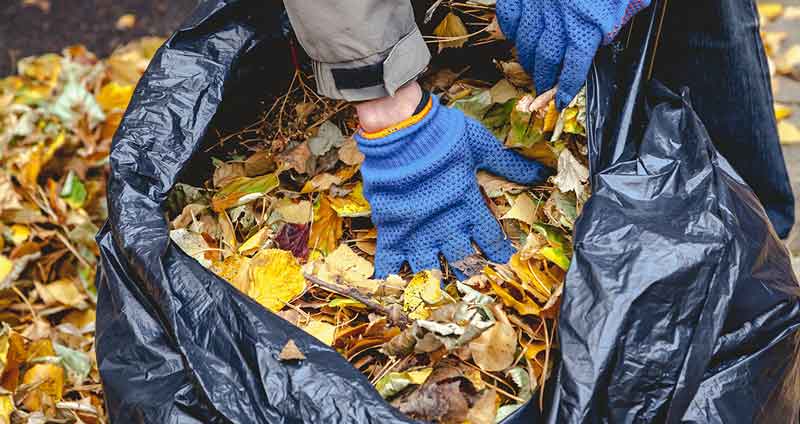
Leaf mold is basically moldy leaves! No surprises so far! Leaf mold is a common way of making compost from fallen leaves.
Many gardeners have abundant dead leaves in the fall and not many other ingredients.
Dead leaves are a “brown” material. You probably know that compost needs a balance of brown and “green” materials for effective decomposition. So what do you do with all those leaves? You make leaf mold…
Leaves can be composted on their own. They have the advantage of having a relatively high surface area (this is because deciduous leaves have evolved to capture as much light as possible). This provides a large surface for composting microbes to work on.
Seedlings are delicate and don’t need nutrition in the early stages of growth and germination. Leaf mold is excellent for making potting mixes because the end result is relatively low-nutrient. The dead leaves turn into compost with a fine structure well suited to potting new plants.
Tip: shredding your leaves before composting them will make the process quicker. But don’t expect finished compost before a year or two!
10. Potting compost
Potting compost is what English folks call “potting soil” or “potting mix .” So if you have a conversation with a gardener in the UK about “potting soil,” you might get some funny looks!
Potting compost is not just compost. It’s a unique growing medium including a mixture of ingredients designed to grow nice big plants in a small volume of space. It includes things like sand or perlite to improve drainage. The texture is very fine and provides structure for roots to grow.
They are balanced to provide the right amount of oxygen, moisture, and nutrients.
Homemade compost isn’t well suited for growing mediums. They don’t have the right chemical and physical properties. Most people buy bagged potting soil, which can be an expensive option. Only use it in your pots and not in your garden unless as a last resort. Otherwise, use leaf mold to make your own!
Conclusion
As you can see, there are many different types of compost. Each type has its own benefits and drawbacks. It’s important to choose the right type of compost for your needs. Otherwise, you may end up with a sub-par product that doesn’t provide the results you’re looking for. Do your research and make an informed decision before purchasing or making compost. Your plants will thank you for it!


